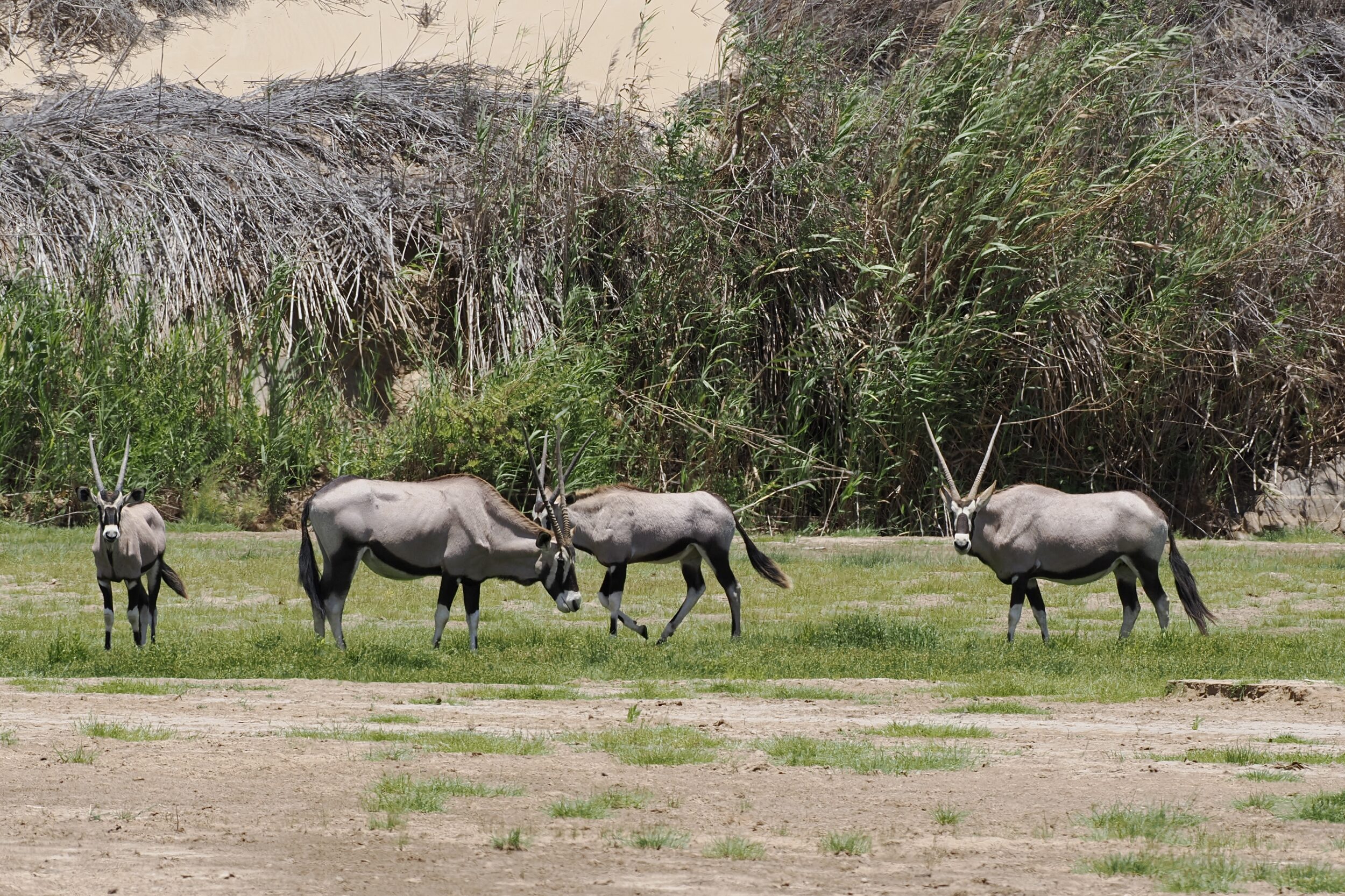This post’s heroes are superbly adapted to life in a very demanding, arid environment.
Oryx gazella – known locally as “gemsbok”, but labelled as “South African oryx” by many non-African English-speakers – is Namibia’s heraldic beast.
It is the largest oryx species.
Gemsbok are remarkably water-efficient.
Few, if any, other mammals can survive for so long, “between drinks”.
They can also reach/withstand amazingly high body temperatures – temperatures that would prove fatal to other mammals. (this ability reduces water needs and energy expenditure).
The pictured individuals are doing it “very easy”, in a place that offers green grass and mostly-moderate temperatures.
This location may look like “another world”, in relation to the location of the “pigs ear” pictured in #15 of this series, but the two sites are within a very short walking distance of each other.
(photo is ©️ Doug Spencer, taken in the bed of the Hoarusib, in that river’s lower reaches, a few ks in from the Atlantic’s “Skeleton Coast”, 12.39 pm on 14 November 2022)
Footnote: bamboo
You may or may not be amazed to know that Africa has many endemic species of bamboo. I am not sure whether the bamboo evident here is of Asian or African origin.
According to at least one reliable-looking source:
Africa is the third richest continent in terms of bamboo species. Bamboo is common in most of sub-Saharan Africa.
Discover more about bamboo in Africa, here.

Comments